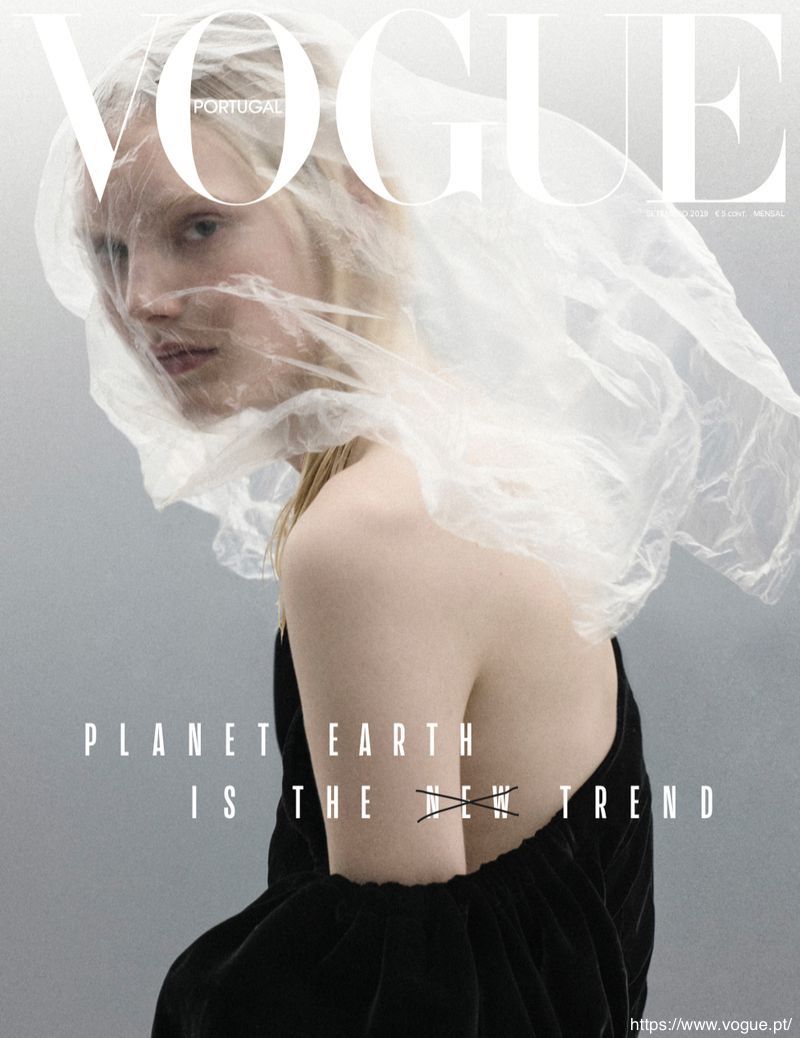I know you're tired to read about sustainable fashion but if we take a trip into the great machinery that is the fashion industry, behind the glitz and glam of the runway, underneath the piles of retail clothing, through the fields of cotton and take a dip into the coloring vats, we will soon notice that something is amiss.
The machine is broken.
Price tags on clothes have never been lower, but the hidden costs of this disposable fashion have never been higher. Most fashion companies today operate under the laws of fast fashion: producing at a vertiginous speed, low quality product, gaining from the sheer mass of clothes sold. Trends become old as soon as they reach the stores. This speed has a big cost: human and environmental. Pollution and exploitation are constants throughout the whole supply chain, from the pesticides strewn onto the cotton fields, to toxic dyes used on the fabric, to the sweatshops in unsafe buildings, to the Co2 emissions due to transport. The resulting clothes are often full of toxic chemicals that if not absorbed by the skin are released in the water at every wash. They last only for a few wears, cannot be repaired or recycled and are ultimately thrown away to chase a new fad. The workers that produce the garments suffer long lasting health consequences and are subjected to terrible work conditions. The fashion industry is the second most polluting industry after Oil.

But is this the way it has to be? How do we fix it?
Sustainable fashion exists at a crossroad between ethics and sustainability. It is as much about making the fashion industry environmentally friendly as it is about allowing the workers to have fair wages and working conditions. With these guiding principles various different companies have come up with different approaches: using organic materials and dies, using recycled plastic bottles to make synthetic fibers, deconstructing old jeans to form new ones, not outsourcing labour to third world countries or if so offering fair wages and so on.
Complete sustainability is the big goal, but also the big challenge. It is not about a single company, the whole supply chain needs to be rethought, from how the raw materials are produced to how many collections arrive in the stores. There used to be a collection for autumn/winter and one for spring/summer, right now the big fast fashion retailers have 52 collections a year. Once, a piece of clothing was an investment, now It can be thrown away. It is not only how the pieces are made that needs to be changed but also how we relate ourselves to the garments. It is improbable to think we may go back to only home sewing and tailoring but also the current pace is destroying our planet. We may find inspiration in the past but we are searching for a way to move into the future.

To buy or not to buy? But, more importantly: What to buy?
Slow fashion is not about compulsively buying new clothes but even nudist need clothes sometimes. The first thing to look in a garment is quality. If we want to move away from a throw away mentality we need to search for clothes that we love, we feel good in and that will last a long time. Complete sustainability is a very high standard that we hope will become more and more accessible, most of our immediate shopping will be some kind of compromise. Until we find the best sustainable way possible, it is up to each individual buyer to figure out, who they want to support. The transparency and traceability of a company are key for the slow fashion movement and should help the consumer to make an informed choice in what they are investing.
So buy, but buy less and buy better. If you get discouraged by the prices of sustainable fashion remember that the most sustainable garment is the one already in your closet. Rewear. Fast fashion and social media have taught us that an outfit cannot be worn more than one time. Let’s be free of that constriction and be proud of clothes that make us feel well. Repair. A well-made dress can be repaired instead of thrown away. Sewing books used to always begin with an extensive chapter on repairing and mending. It is that fundamental.
If you get bored swapping, borrowing and donating are excellent ways to keep your wardrobe fresh and saving garments from the dumpster. Second hand and vintage shopping are cheaper ways to bring some fun into your clothes selection. A fairly new option is renting clothes, look out if there is a renting business near you. Or maybe, just maybe, sew your own. Paint your own T-shirts, take a swing at embroidery or maybe knitting. More km0 then that is difficult to obtain.
Sustainable fashion is not yet easily accessible to everyone, it could be too expensive or too far away. You couldn’t find anything in your closet, your friends’ closet, your mother’s closet, the vintage shop let you down and you really have no idea how to sew? Go to that fast fashion store. But pay attention to what kind of threads make up the garment, are those materials that will last? Is it plastic? Go for natural fibers, go for timeless cuts, go for something you know you absolutely will love. And buy that one piece. And then really wear it. Until you cannot anymore. Sometimes it is about making the best with what we have.
Fashion is a necessity. Fashion is a statement. Sustainable fashion is not about an aesthetic. It is not only black formless sweaters or patchouli reeking tie-dye shirts. Slow fashion is the ethics behind the garment, it gives it a direction. It is like reinventing the wheel. If the wheel were inherently flawed.
Written by GISELLA LOMBARDI

